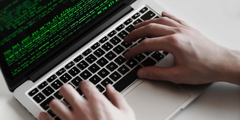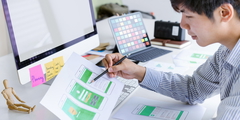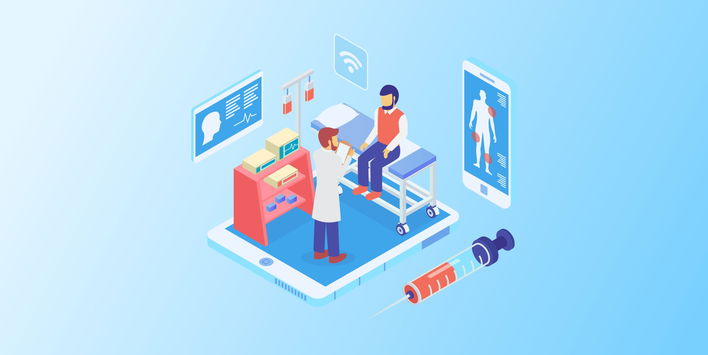I have a close friend that I meet often. These days, he has been particularly excited about the FitBit band that he recently bought. The fitness band allows him to keep a track of the number of steps he walked or ran that day, tracks his sleep, and also gives him reports about his fitness performance versus target. Disparate sleep trends tracked by his fitness band can symptomize an underlying problem. This is just a small example of how the Internet-of-Things is all set to transform healthcare. Let’s delve more into it.
WHAT IS INTERNET-OF-THINGS?
Let us first shed some light on the concept itself. Internet-of-Things is a system that facilities device-to-device communication that is built around cloud computing. Like my friend’s fitness band, most devices have some mechanics to gather, evaluate, and measure health-rated data. Internet-of-Things can include some of the following:
- Consumer Fitness Tracking – Fitness Bands like FitBit, MisFit, etc.
- Wearable External Devices – Insulin Pumps.
- Implanted Devices – Pacemakers.
- Stationary Devices – Fetal Monitors.
In short, Internet-of-Things for healthcare includes those devices that can sense and collect actionable data. When shared with physicians or healthcare professionals via cloud computing, this data saves significant time and augments patient care.
IOT & HEALTHCARE
Internet-of-Things has already started to contribute to the healthcare industry, and there’s much more that can be done with it- if leveraged efficiently. Here are some of the benefits that IOT can present to the Healthcare industry in the times to come:
- Operations Enhancement: Ensuring smooth operation of a healthcare facility can play a pivotal role in minimizing costs and improving patient care. Managing hospital resources like expensive equipment, staff, inventory, facilities, and patients is one of the many layers of operational complexity that exist in a healthcare set-up. Internet-of-Things can make a contribution in the following ways:
- Medical Supplies’ Demand Anticipation: Healthcare operations’ staff can use the data to right-stock their medical inventories. Currently, large sums of money are spent on stocking a substantial amount of medical supplies. This is to ensure that they are available in case of emergencies. However, this blocks a healthcare facility’s capital and Internet-of-Things can help resolve the issue. With the help of IOT devices, emergency situations and patient care requirements can be anticipated to a great degree. This can indicate the level of demand for medical supplies, and hence the operations’ team can stock supplies in accordance.
- Supplies’ Stock Management: Apart from anticipating demand for medical supplies, their stock can also be managed in real time with the use of such IOT devices as RFID tags and mobile scanners. These technologies are already in use, and when combined with strong CRM tools they can generate valuable insights.
- Equipment Scheduling: Many healthcare facilities tend to share expensive equipment. However, there is a high element of mismanagement as there is no fool-proof means being used for the equipment’s efficient scheduling. With cloud based scheduling applications with the use of Internet-of-Things devices, the utilization of this equipment can be tracked and coordinated to ensure lower costs.
- Collaboration: In the future, a higher plinth of collaboration will be effected between large conglomerates and smaller technology companies. This collaboration will help healthcare facilities to stay ahead of the curve in technology, and keep their systems up-to-date. This will also pave the way for more innovation in the field.
- Patient Care Improvement: Along with smooth operations and advanced technologies, better patient care is another important agenda for all healthcare facilities. Internet-of-Things will make sure that these healthcare facilities are exposed to pertinent information that helps them provide optimal patient care.
- Patient Records: As we have all seen, most physicians and surgeons spend a large chunk of the treatment time on gathering redundant information. Sometimes, they are swamped with information about the patient- much of which is not relevant. IOT wearables, however, hold the potential to capture relevant and timely information about the patient that can be shared without any hassle. Hence, these notes can be referred to initiate immediate treatment.
- Information Collaboration: All information from the patient’s wearable devices, physician’s notes, etc. can be collated and made available to staff. This will help take prompt decisions.
- Pharmacy Prescription: With the help of IOT devices, prescriptions can be sent to pharmacies directly from the doctors’ mobile devices. This eliminates the chances of misplaced prescriptions by patients’ relatives and other logistical problems.
EXISTING APPLICATION
As mentioned earlier, the healthcare industry has already begun the adoption of Internet-of-Things. Here are some examples of existing applications:
- Smart Beds: These smart beds have the capability of sensing when the bed is occupied and when the patient is attempting to get up. This information can be readily shared with the nursing staff. Additionally, these beds automatically adjust themselves to make certain that the patients get the desired support.
- Home Medical Dispensers: These medical dispensers can be equipped with system that can automatically upload data to the cloud when medication is skipped. Information can also be shared about other incidences that are worth the medical staff’s attention.
- Others: There are various other examples of how devices are gathering data and sharing it with healthcare staff for improved efficiencies and patient care. Such examples can include ECG monitors, Glucose monitors, pulse oximeters, clothes with sensing devices, etc.
There are some organizations that are making a difference. The Proteus ingestible pill sensor contacts your stomach fluid and communicates a signal to determine the pill’s identity and the time when you took your medication. BodyGuardian is another real life example. It is a wearable sensor that is aimed at remotely reading the patient’s biometrics. The same can be communicated to the physician too.
CHALLENGES
Like any technology, Internet-of-Things faces its share of challenges too. Here is a list of some of the challenges that developers and adopters need to worry about:
- Need Analysis: It is imperative to make sure that the customer is spoken with before the development of these products. This way, you spend some time to understand the real need that drives your product/s. Eventually, these products need to be meaningful, scalable, and easy to use.
- Data Privacy: The implementation of IOT solutions will certainly raise concerns about the privacy of sensitive data. Most devices use secure methods of cloud communication, but more needs to be done to make the system absolutely fool proof.
- Regulations: There are regulations on various medical devices, and IOT devices will certainly come under the purview of these regulations too. That might restrict innovation to some extent.
CONCLUSION
Internet-of-Things holds unparalleled potential to transform the healthcare industry. Innovation will, however, be the key to successfully address the various pain points.

Dipesh Patel
Being a chief technology officer, most of my time goes into the research and development of progressive technologies. Learning and experimenting with new technologies is my passion. And I live my passion by working on challenging and disruptive products and projects. Apart from being a geek, I love spending quality time with family and pets.

Let’s build the next big thing!
Share your ideas and vision with us to explore your digital opportunities
Similar Stories
- Trends
- undefined Mins
- May 2021

- Trends
- undefined Mins
- April 2022

- Trends
- undefined Mins
- March 2017


Receive articles like this in your mailbox
Sign up to get weekly insights & inspiration in your inbox.
